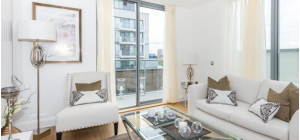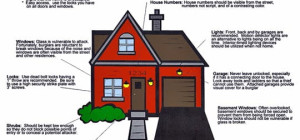Before you purchase a home, it is advisable to do an in-depth survey done. Such a report can run you several hundred pounds, however, so before you go shelling out for a professional inspection, you can conduct your own thorough visual inspection. If you know where to look carefully, you should be able to spot issues that may save you a great deal in survey fees. Here is a checklist of what to look for when buying a home.
EXTERIOR
No matter how charming the exterior of the home may appear at first glance, it is important to do a careful, thorough and detailed visual inspection. When the structure of a home is not sturdy and solid, it can cause cracks in bricks, tiles or other materials. Therefore, taking the time to thoroughly inspect the exterior is one of the most important things you can do.
- Brickwork should be clean and free of chips, with mortar that is evenly finished and of a consistent color. Lighter areas can suggest recent repairs, which calls into question the reason repairs may have been necessary.
- Paint should even and consistent, with no chips or areas of peeling. Sills and shutters should be clean and neat, with sills finished off on the underside.
- Guttering should appear secure with no stains that might suggest drainage issues. Manhole covers should fit securely and be level and even with surrounding surfaces.
- Garage doors should open and shut properly, and the interior should be neat, clean and free of debris. There should also be no large cracks in cement.
- Drives and pathways should be level, even and neat with no large cracks or chips. Surfaces should be easy to navigate and allow for clear access.
- Boundary walls should be complete with secure fences and gates in good working order. Also look for leaning or cracked retaining walls and disintegrating bricks or stonework.
- Roof should appear neat and tidy with a smooth, level surface. There should be no loose or cracked tiles. The roof is one of the most important elements of a home and often the most overlooked when inspecting a home. If possible, you should do your best to climb up and get as good of a look at the roof as you can or even use binoculars to get a closer look.
- Chimneys are also important to inspect, preferably with binoculars. They should not lean or bulge and there should be no small plants growing from the top or sides. Also look for white “furry” salts coming out of brickwork or brown staining on chimney breast.
INTERIOR
Too often buyers get distracted by interior decor and miss more critical issues. You can easily plan a remodeling a room or two or some minor renovations and set a budget for it if the only issues are aesthetic ones. Even adding in an extra bath or powder room is significantly less expensive than having to replace timber with dry rot in the loft. Here are some areas to pay close attention to in the interior.
- The surface of plasterwork should be even and free from rough patches. It should also be neatly finished around pipes, light switches and electric sockets. Pay careful attention to cracks in corners and high areas. Also check carefully to ensure there are no joints showing through or surface cracking. Pay close attention to dampness on walls and ceilings and look for any trace of black or green mold growth.
- Window frames should be free of damage, with windows that open and shut easily. Also pay close attention to water running down windows and pooling at the base. Standing water is always an invitation for mold and mildew to develop.
- Make sure that all locks and bolts operate properly and that all doors open and shut properly. Check for gaps between doors and frames and that all paintwork is complete, including on hidden surfaces such as the top of the door frame. Check carefully for any warping around door and window frames.
- Make sure banisters and handrails are fixed securely on staircases and that treads are even and level. Make sure floor tiling is complete around cupboards, fittings and doorways and that any sheet flooring is clean, flat and free from any bubbling or curling edges. Also pay attention to any springiness in the flooring as well as any damp or musty smells or staining.
- Check for cracked or failing sealant around sinks, showers and baths and for damp stains on the ceiling of any rooms below a bathroom. Sanitary fittings should all be clean and undamaged, and the toilet should flush and refill properly. Tiles and grout should be clean and neat, with no cracks or stains.
- Kitchen units and worktops should be free from damage, with all appliances in good working order. Appliances should also come with operating instructions and any relevant guarantees. Extractor fans should be fitted correctly and in good working order. Cupboard doors should all be straight and even and open and close correctly.
Not every small crack is a sign of more significant damage, but an unsteady frame can cause cracking in both interior and exterior finishes. Perhaps the biggest red flag is a persistent mildew smell. If everything seems to be in order, you will still want a professional to give their seal of approval, but you can save yourself a good deal of money by doing your own very thorough inspection first.









